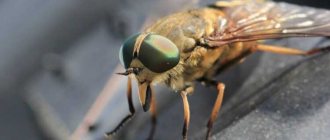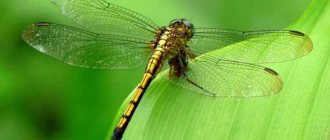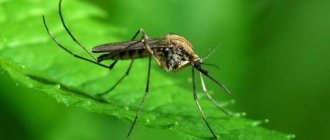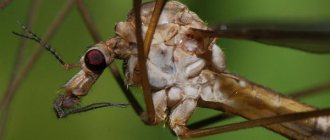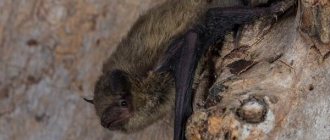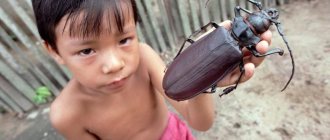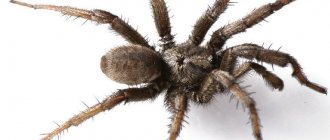- Appearance
- How do ferrets behave in the wild?
- How long do ferrets live?
- Types of ferrets and their habitat - Steppe - Forest - Black-footed, or American
- What do they eat in nature?
- Reproduction and offspring
- Who is dangerous for a ferret: the main enemies
- Population and species status
- Domestication of the ferret
- Conclusion
One of the most interesting animals that are representatives of the mustelidae family are wild ferrets.
Small in size, but active and inquisitive, ferrets are a cross between a dog and a cat. This predator cannot be called too aggressive, but in case of danger it can stand up for itself. People have been watching ferrets for a long time and realized that they can be domesticated. Ferrets are very playful and interesting pets, with whom you will never be bored.
Anyone interested in the animal world will be interested to know what ferrets eat, what lifestyle they lead, how they reproduce and how they can be domesticated.
Appearance
Not all people know what a wild ferret looks like. Adults can be from 30 to 50 cm long. They have an oval, laterally flattened head, which smoothly turns into a long flexible neck and an elongated body. The legs of this animal are very short - no more than 6-8 cm. Small ears and button eyes sticking out in different directions are the distinctive features of the ferret. The shape of the nose of these animals is similar to a cat, but they have a more elongated muzzle.
Beautiful, dense and soft brown-black fur is short in length, but on the back it can be up to 6 cm long. The fur becomes fluffier before winter after molting. Ferrets also have other distinctive features - white spots near the ears and chin. Sometimes you can find ferrets with white undercoat on the sides of their bodies. Even less common are ferrets with completely red fur or white ones - albino.
Ferrets are always distinguished by their miniature, graceful physique. This is necessary so that they can fit into even the narrowest hole. The limbs of ferrets have five fingers with sharp claws, which serve the mammals both as protection and as an excellent “tool” for digging a hole.
Ferret instead of a cat
The domesticated form of the wild forest ferret is called the ferret or furo. About 800 years ago, the first domestic ferrets appeared. They lived only with people of the upper class.
Today, the albino ferret is becoming the most popular among breeders. This is a descendant of black forest polecats, and it is he who is called furo. He has a snow-white coat and differs from his relatives in his red eyes. What does a ferret look like? The photo in the article shows furo in all its glory.
Furos kept at home are quite large: body length can reach 50 cm, weight 2 kg. The lifespan of a domestic ferret is significantly longer than that of its wild counterparts. When organizing feeding a ferret, you need to take into account that it is a predator. The diet should include chicken, duck, and fish. They will not refuse cod, haddock and flounder.
The forest ferret is also called the common or dark ferret. As noted above, the ferret is a real predator. These sneaks take great pleasure in eating rats and mice, and in addition dangerous vipers.
It has been established that snake bites do not harm animals in any way. In order to eat nourishingly and well, the ferret is forced to hunt for a living, showing cunning, endurance and dexterity.
How do ferrets behave in the wild?
The ferret is a predatory mammal and is related to all members of the mustelid family: stoats, weasels and minks. Ferrets can be of four types. Of these, three live in the wild, and the fourth species, the ferret, is domesticated.
This decorative variety was created by people specifically to be kept along with dogs and cats. Previously, ferrets were even kept to hunt rabbits with them.
Ferrets in the wild are predatory animals, and as such they are required to be bold, alert and fearless. If suddenly they encounter a much larger enemy on their way, the animals will not be afraid and will accept the challenge. In addition, they do not doubt their abilities and remain true to themselves when it comes to getting food.
A ferret can attack a bird's nest, eat all the eggs, and, if possible, deal with the adult birds. These mammals do not form packs, but maintain contact with their relatives. Usually in a small group there is one alpha male, who dominates not only during the mating season, but also during normal times. Each of the animals occupies its own territory of residence, marking its boundaries and regularly making the rounds.
Ferrets are most active in the evening and at night. During the day, the ferret usually sleeps in a dug hole. Their place of residence can be either permanent or temporary, but always with a small hole. If ferrets move around the territory before dawn, they decide to settle down for the night in unoccupied holes of others - a hare or a badger. And if the weather conditions deteriorate, it becomes rainy or windy, the ferret may not leave his hole for several days. He certainly lines the house with grass and leaves to make it warmer. In winter, ferrets can climb into barns, basements, sheds, and storage rooms.
Hunting and habitats
In winter, it often settles in barns, uninhabited buildings and barns. In the evening he leaves his shelter and goes out hunting for hares, rabbits, quails, lizards, snakes, frogs and other small animals; He also does not allow poultry from the size of a pigeon to the size of a turkey to go down and especially likes to drink eggs.
Having climbed into the poultry house, he strangles the entire population if possible, and pursues wild rabbits so persistently that one family of ferrets is quite enough to significantly reduce the number of rabbits in the shortest time.
In Central Europe, the ferret has now begun to be found, however, much less frequently and is kept mainly in inaccessible places of dense forest. In the Alps it rises in summer much higher than the forest line. In abandoned rabbit holes, in cracks in rocks or in piles of stones overgrown with bushes and tall herbaceous plants, the female makes a nest in which she lays in April or May, less often in early July, from 3 to 8, usually 4-6 cubs.
If taken early, young ferrets can be trained to hunt rabbits.
A ferret is a small predatory animal of the mustelidae family, belonging to the genus of weasels and ferrets.
How long do ferrets live?
In the wild, ferrets live in completely different areas: in the steppes and on the edges of deciduous forests, they inhabit mountain ranges and can be located in ravines, semi-deserts and sometimes even settle near humans. But such a “neighborhood” hardly makes people happy, because ferrets often commit robbery: they kidnap chickens or rabbits.
How long a ferret will live depends on its species and living conditions. For example, the average life expectancy of a steppe ferret is about 10-12 years. Forest ferrets, on average, live about 14 years. This is much longer than the lifespan of domesticated mustelid mammals. And the average lifespan of the American ferret species is about 8 years.
Habitat
Black ferrets live in Western Europe and the northwestern forests of Africa. In Europe, representatives of the species can be found throughout the European part of Russia with the exception of the Caucasus, Karelia and the Lower Volga region. A small population lives in England and Western Siberia.
It is fashionable to meet the steppe ferret in Ukraine, the south of the Czech Republic and Yugoslavia. And also in the territory of Moldova, Trans-Baikal Territory, the Far East and China.
The kinship between all species of ferrets is so strong that they can interbreed and have common offspring. Therefore, in adjacent areas where black and steppe ferrets live, researchers often come across populations of mestizos that are simultaneously similar to both varieties.
Types of Ferrets and Their Habitats
There are several types of ferrets and each of them has distinctive external features. Ferrets also differ in their habitat and lifestyle.
Stepnoy
These representatives of the mustelid family are among the largest: their body length can reach more than 50 cm and their weight exceeds 2 kg. Sometimes these ferrets are called white, due to the fact that on the sides of the body they have a light undercoat that is visible under the brown hairs.
The front part, starting from the chin and including the front legs, is dark, almost black. There is also a dark stripe running down the back and onto the tail. The ferret's limbs are also dark in color, and there is a white “mask” on its face.
This species of ferret lives in central Asia, China, Romania, Ukraine, Hungary, the Czech Republic, and also in Russia. Moreover, in our country they are common in many regions, from the territory of the Ural Mountains to the regions of the Far East.
Forest
The forest ferret is an interesting representative of the fauna, but it is much smaller in size than its steppe relative. The ferret's body length is about 45-50 cm, and its weight cannot exceed one and a half kg.
The color of the forest ferret's coat allows it to hunt without being noticed. The black-brown color of the coat is marked throughout the body, including the limbs, and only on the muzzle - near the nose and chin - there are white spots. There is also a white border on the ears.
This ferret is distributed almost everywhere: it is found in both Europe and Asia. On the territory of Russia you can also meet this forest inhabitant.
Blackfoot, or American
This type of ferret is characterized by its very miniature size. The body length of adult individuals does not exceed 40 centimeters. The coat of these animals has an interesting color: the body is most often white and red with a black stripe on the back and a black tip of the tail. Ferrets' limbs are also black. Dark spots are also present on the face: they are located around the eyes and on the forehead. This specific “mask” makes the animals look like a panda.
The American ferret is listed in the Red Book, as its numbers have decreased significantly recently. This rare species of ferret lives only in central North America.
Ferret colors
Ferrets have a large number of colors due to constant selection. To determine the breed of a ferret, not only the color of the animal is taken into account, but also many other marks on the body. In addition to color, the shade of the fur, spots on the body, paws, tail, mask pattern on the face, eye color, and nose color are taken into account.
Wild individuals have much fewer colors and markings than domestic ones. Many domestic individuals were bred selectively, crossing different species, thereby obtaining a huge variety of colors.
Fur color:
- Albino.
- Golden.
- Nacre.
- Pastel.
Shades:
- Albino.
- White ferret (differs from an albino in eye color; an albino has red eyes, a white ferret has black eyes).
- Sable.
- Golden.
- Brown.
- Champagne.
- Chocolate.
- Black.
Nose color:
- Pink.
- Brown.
Colors
The colors include special spots on the body, paws and tail. It is the colors that create the patterns on the ferret's fur. Among domestic ferrets, individuals with clear pattern lines are especially valued. There are a lot of colors. All colors can be divided into 4 groups:
- Standard. They can be any color, but there is very little white. The topcoat and undercoat are pigmented.
- Solid. Any color except white. The guard and undercoat are the same color. There is no mask of this color on the face.
- Roans. One half of the fur is white, the other half is pigmented. There is a mask on the face.
- Siamese. The color can range from light brown to dark brown. Like Siamese cats, ferrets with this coloring have paws and tails that are darker than the base color. There is a mask on the face.
Location of white spots
- Panda - panda. White head and paw tips.
- Blaze - flash. White spots on the head.
- Mitts - mittens. White spots on paws.
Markings
In addition to color and patterns, some ferrets have special markings that can be used to determine the breed of ferret.
- Blaze. White stripe on the head, tips of the paws and belly with white splashes.
- Harlequin. Over the entire surface of the fur, the spots are located in such a way that they cannot be classified as any other type of marking.
- Point. The paws are different from the main color.
- Badger. A short, uneven stripe on the head.
- Mitt. White inclusions on the paws, tail, belly, and chest.
- Milk muf. Very noticeable stain around the nose and mouth.
- Marked. Less than half of the guard hair is colored.
- Silver. Can only be found in mother-of-pearl ferrets. White and gray hairs are distributed evenly over the entire surface.
- Roan. 80% wool with pigment, the rest is white.
- Pinto Panda. The head and paws are white.
Coat types
Ferrets differ not only in the type and color of their coat, but are also divided according to the type of coat. The type of coat differs in hair length, thickness and stiffness.
There are 3 types of wool:
- Angora. The length of the spine is from 7 to 12 cm.
- Half Angora. The length of the spine on the back is 5 cm, on the stomach 3 cm.
- Normal coat. The length of the awn is 3 cm.
The coat color and special markings allow a ferret to be classified as one species or another, regardless of its habitat. Despite the abundance of colors and markings, only ferrets can be kept at home. Almost all wild individuals are aggressive and difficult to tame.
What do they eat in nature?
Many people who study the animal world are interested in what a wild ferret eats. It turns out that this mammal in the wild preys on other smaller and weaker animals:
- Mice;
- Rats;
- Krotov;
- Zaitsev;
- Khomyakov;
- Rabbits;
- Lizards;
- Birds.
The ferret is very agile and flexible, he can quickly pursue his prey, but most often the animals watch for their lunch near the victim's hole. In the spring, ferrets often climb into hare dens, preying on defenseless cubs.
In difficult, hungry times, animals do not disdain carrion, eat food waste, and make predatory raids on chicken coops and rabbit farms. It is very interesting that during the cold season, ferrets make pantries with food reserves so that they have something to feed themselves during difficult periods.
Hunting for animals begins at dusk, but hunger is not an issue, so even in daylight they sometimes have to leave their shelter to find food.
If the hunt is unsuccessful, they still will not eat plant foods due to some features of the digestive system. In this case, the ferret will prefer the carcass of a dead animal rather than fruit, vegetables or grass.
Variety of colors
It is surprising that the colors of domestic ferrets have reached an extraordinary variety in a fairly short period of time. In order not to get confused, you need to clearly know how one color differs from another.
Variety of colors of domestic ferrets
The colors of ferrets are characterized by the predominance of one or another primary color, as well as by the color of the fur, eyes and nose. The important part is the markings, which are represented by white spots. They also differentiate ferrets even with similar colors. Sable is the closest to the wild color of its ancestors.
Reproduction and offspring
The beginning of the mating season in ferrets depends on their species. The forest species begins the rut in April, the steppe species - and even earlier - from February. On average, such a period can last several months and last until the end of summer.
Females are ready for procreation by 10-12 months of age. They carry their offspring for about 45 days. Ferrets give birth to more than 4 cubs, sometimes up to 12. Newborn cubs are born with virtually no hair, which makes them very vulnerable, helpless and in need of attention and mother's milk. And when the babies turn 2 months old, the mother begins to bring them prey and feed them meat.
Ferret breeding
As for the breeding season of predators, it depends on the environment in which a particular ferret species lives. In general, it starts in February and lasts until the end of summer. For example, steppe ferrets begin their mating games in early spring; the rut of forest ferrets can begin in April and continue until the end of June. At the age of approximately 10-12 months, these predators become sexually mature, and they mate without any special mating rituals. It looks quite aggressive: despite the active resistance of the female, the male roughly grabs her by the scruff of the neck with his teeth, after which her withers remain bitten and frayed for some time.
The gestation period for a female ferret is quite short and is only 1.5 months. The number of offspring depends on the type of animal (on average, a female produces from 4 to 18 cubs, weighing no more than 10 g). Breastfed offspring stay no longer than 2.5 months, and already at the age of 4 months, children begin to eat meat. Young ferrets become hunters at about the age of six months, and at first they are accompanied by a female. After mastering all the skills necessary for survival, predators begin an independent life.
Who is dangerous for a ferret: the main enemies
It is interesting not only what ferrets eat in the wild, but also what kind of relationships they have with other animals.
Natural enemies of ferrets include, first of all, wolves and foxes. They also expect big trouble from wild cats and large birds of prey (owls, eagles, falcons, golden eagles). Snakes and other reptiles pose no less danger to ferrets.
Of course, a person also brings harm to these inhabitants of nature if he begins to disturb their habitat by constructing roads, premises, and invading nature reserves.
Natural enemies
Recommended by topic
Kite Boa Constrictor Lion
Small predators have many enemies, but not every animal dares to attack an adult and cunning animal. In case of danger, ferrets become aggressive and can themselves attack an unwary predator. Therefore, in normal times, animals prefer to bypass small aggressors.
Mostly young, weak or sick animals that are unable to escape or give a worthy rebuff are attacked.
At night, young ferrets are attacked by owls and eagle owls, and during the day by eagles or golden eagles. Even a crow can drag away a small ferret that has strayed from its mother, but such cases are quite rare.
Of the large predators, ferrets should avoid encounters with wolves, foxes, bears, lynxes and wild cats. But large animals include ferrets in their diet only during the period of winter hunger; in the summer they find more “flexible” and tasty prey.
Ferrets can also be attacked by large snakes, although due to carelessness they themselves can become prey to a toothy animal.
But the most terrible enemy was and remains man. Ferrets are hunted for their fur, and road construction and deforestation are pushing some species to the brink of extinction.
Population and species status
The size of the ferret population directly depends on their species. The black-footed ferret, unfortunately, is one of the animals that are disappearing from our planet. This species of ferret suffered to a greater extent when people exterminated prairie dogs en masse. They served as food for a small, agile predator.
Due to the extermination of prairie dogs in the late eighties, only about 20 American ferrets remain. The individuals that survived were placed in zoos to ensure that the population was maintained and their numbers increased. This plan worked, and already in 2013 there were more than a thousand of these ferrets. But today there is still a threat that these animals will disappear forever.
The population of steppe and forest ferrets is currently not decreasing, despite the fact that the animals also encounter other predators and suffer to some extent from humans and also get sick. However, some subspecies of steppe animals are also listed in the Red Book.
To ensure that ferrets remain alive on our planet, people are taking various measures, including placing animals in nature reserves. We can only hope that in the future the situation will somehow change for the better.
Black-footed ferret
This is the only species native to North America. The steppes and hills of North America are its habitat. The black-footed ferret looks like a prairie and forest ferret. Small differences are observed only in color. The predator lives in abandoned prairie dog burrows.
The black-footed ferret has a long body with dark brown fur. The animal has dark fur on its back, a black tip on its tail, and its legs are also black. The black mask on the face is located in the eye area. The nose is black, and the muzzle, forehead and neck are white. The animal's ears are large and rounded, and its paws are thick and short. The weight of males reaches one kilogram, and females up to 850 g. The body length of males is 38-60 cm.
In captivity, the black-footed ferret can live up to 12 years.
Domestication of the ferret
Why is a wild ferret dangerous? This is the question asked by people who think that this cute, at first glance, animal can be caught and brought home. After all, it turns out that ferrets get used to humans quite quickly, especially females. They begin to see him as the owner.
Today on the Internet you can find videos of ferrets living at home quite often. These funny and cute animals can become pets and will surprise and delight every day. However, there are also individual characteristics of these animals that are important to know about.
Surprisingly, ferrets, just like cats, are very clean, and immediately begin to go to the toilet in the litter box. But it is important to remember that they cannot get along with birds, such as parrots or canaries, as well as hamsters, rats and other rodents or reptiles. On the contrary, ferrets can make friends with cats and dogs quite quickly.
Another similarity with cats is their natural curiosity: ferrets love to explore the territory and learn everything new. This means that they will certainly begin to explore even the most hidden corners of the house. A person should know in advance that a ferret can crawl into a closet, under a bed, into a trash can, or dig up soil in flower pots.
As in the wild, ferrets are predominantly nocturnal and are most active in the evening hours. Sometimes their irrepressible energy interferes with others: they bother the owners and pets living in the house, wanting to play with them. Ferrets love walks and can be walked like a cat using a harness.
Another important thing to keep in mind is the average lifespan of a ferret in a domestic environment. It rarely exceeds 7-8 years, that is, it turns out that ferrets live much longer in the wild than in captivity.
The domestication of ferrets is a very interesting process. And people noticed that these animals have their own habits, thanks to which you can understand what mood your pet is in and whether anything is bothering him:
- If a ferret wags its tail, it means it is happy and satisfied;
- If his fur stands on end, he hisses and arches his back, it means he is angry and ready to attack the one who angered him;
- If the ferret is frightened, he may make a sharp and loud cry;
- By licking the owner's face or hands, the ferret shows his affection and trust;
- If during games the pet grunts or makes other interesting sounds, it means he is happy;
- If a ferret is having fun, it may jump up and arch its back.
Ferret: description of the animal
There are several varieties of ferrets, which differ little from each other. It should be noted that each variety has its own characteristics.
Appearance
The ferret is a small animal whose appearance is distinguished by its flexibility and grace. Despite the fact that the animal’s legs are quite short, they are muscular and strong. This animal can not only climb trees and dig holes, but is also an excellent swimmer. In addition, the animal has unique mobility, so the animal cannot sit quietly for a single minute.
The color of this small predator can be varied, ranging from light shades to dark, almost black. In this case, the torso is always darker compared to the rest of the body. The coloring of the muzzle is such that the folding pattern looks more like a mask. The animal's fur is relatively long, but fluffy, with the hairs at the base being somewhat lighter than at the ends.
Interesting fact! With the onset of cold weather, at the end of the molting process, the fur of ferrets acquires a special shine and becomes quite beautiful.
Males, although slightly larger than females, reach a length of no more than 60 cm. The peculiarity of these animals is their long and very fluffy tail.
Behavior and lifestyle
Ferrets are nocturnal predators, so their peak activity occurs at night. Moreover, this applies equally to both wild ferrets and domesticated ones. Ferrets lead a sedentary lifestyle, becoming attached to their habitats, and leave their territories only in the event of unforeseen situations, for example, natural disasters.
These animals live in burrows that they dig. They arrange their homes using dry leaves and grass. If they come across an empty hole, for example, a fox hole, then they can easily take it. If necessary, ferrets can easily move closer to humans and inhabit barns or basements.
To find food for themselves, ferrets often appear in villages and villages. After such visits, people are missing poultry. By nature, ferrets are quite active and during waking moments they cannot sit still for even a second. And yet the nature of the behavior depends on the sex of the animal. Females are more cheerful and playful, and their intelligence is noticeably higher than males, so they learn much faster. Males are calmer and more diligent, but they become strongly attached to humans.
How long do ferrets live?
Being in the wild, these animals live a maximum of 3.5 years, since dangers await them everywhere.
Important point! Even a life expectancy of 4 years requires care for the health of the animal, with proper nutrition. If you keep a ferret at home, the animal can live 2 times longer, or even 10 years, although such cases are considered very rare.
Ferret - All about the animal | Domestic Ferret | Fretka
